We all know that the pyroelectric infrared sensor has been used in our life, so what is the basic principle and characteristics of the pyroelectric infrared sensor?
1. Infrared
Infrared IR is ubiquitous. The hot sun, burning candles, roaring fireplaces, glowing light bulbs, biting ice, and all parts of the human body emit infrared rays that are invisible to the naked eye. Any object, as long as its temperature is above absolute zero (-273°C), will invariably emit infrared light, but at different temperatures and at different wavelengths, which travels at the same 300,000 kilometres per second as other radio waves. Infrared light is an electromagnetic wave with a wavelength longer than that of red light, the longest wavelength of visible light. They can be divided into near, mid and far infrared: near infrared wavelengths of 0.78-3.0 microns; mid infrared wavelengths of 3.0-20 microns; and far infrared wavelengths of 20-1000 microns.
2. Principle of operation of the infrared sensor (PIR)
As the human body moves through the PIR sensing range, the infrared rays emitted by the body are focused through the lens and transmitted to the infrared detector. Infrared detectors have two sets of special sensitive materials that can pick up temperature (called dual elements). When the temperature change induced by the two groups of materials breaks the original equilibrium state, the internal spontaneous polarisation produces a change in charge, the released charge is transformed into current, the current produces a voltage drop across the parallel resistors and a weak voltage signal is output after the impedance transformation; when the temperature change disappears, the materials return to equilibrium and the output becomes 0 again.
The weak signal from the inductive head is amplified by an amplifier, the low-pass filter filters out high-frequency interfering signals and finally the control signal is given by digital processing and software analysis.
3. Infrared sensing devices
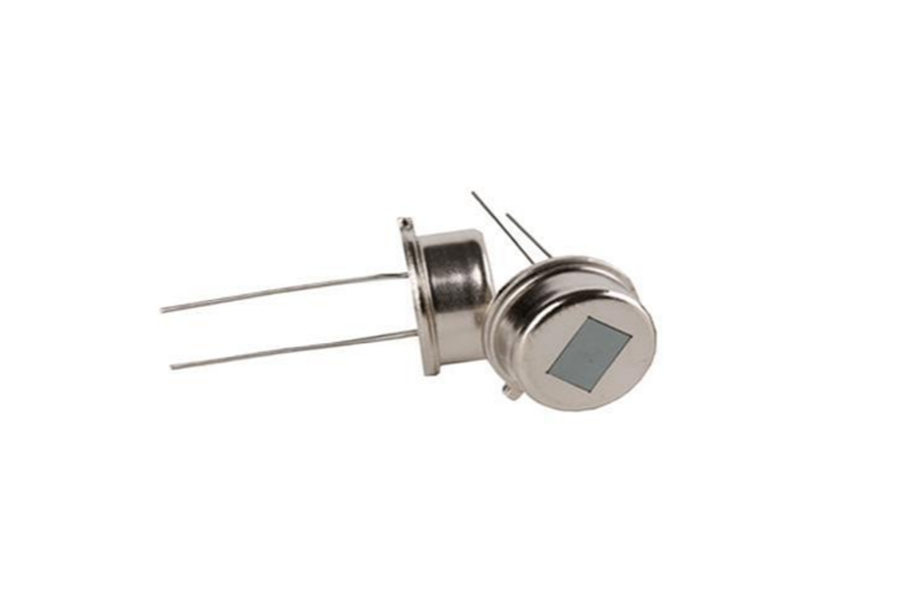
Pyroelectric infrared sensors (PIR) and thermocouples are both thermoelectric infrared sensors based on the principle of the thermoelectricity effect. The difference is that the pyroelectric infrared sensor has a much higher coefficient of thermoelectricity (coefficient) than a thermocouple.
The wafer polarization of the pyroelectric infrared sensor varies with temperature. When a crystal is heated, an equal number of charges of opposite sign will be generated at both ends of the crystal, and this phenomenon of electrodeposition due to thermal changes is called pyroelectric effect.
In order to suppress the interference caused by its own temperature change, the sensor is connected in series-opposing or differential balanced circuit of two thermoelectric elements with the same characteristics, so that it can detect the infrared energy change (ΔT) emitted from the object in a non-contact way and convert it into an electrical signal output.
The purpose of the pyroelectric infrared sensor in the structure of the field-effect tube field-effect transistor is to complete the impedance transformation. Because the output of the thermoelectric element is a charge signal, and can not be used directly and therefore need to use a resistor to convert it into voltage form the resistor impedance up to 104MΩ, so the introduction of the N-channel junction type field effect tube should be connected to the common drain form that is the source follower to complete the impedance conversion.
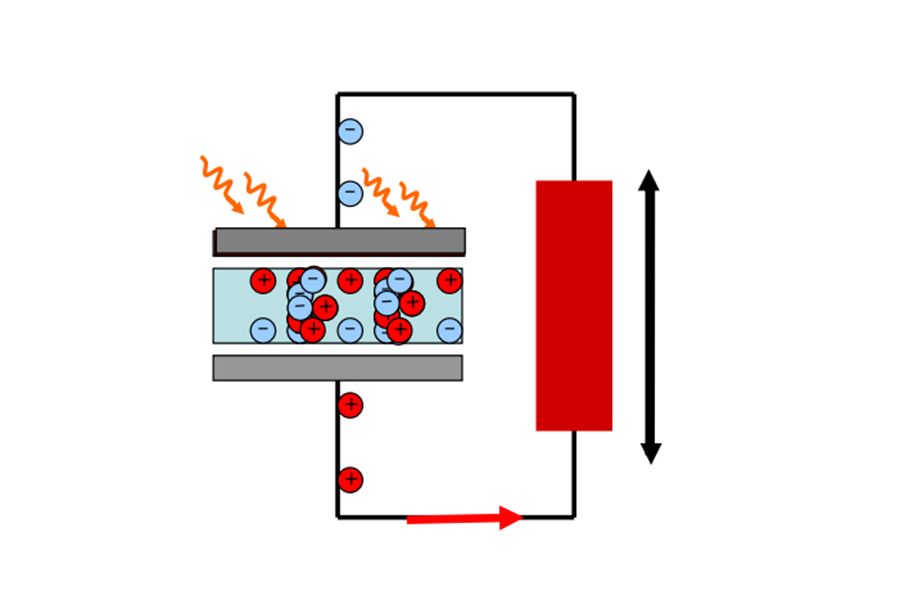
(Resistor-formed voltage is transformed by impedance to form the output)
4. Principle overview diagram (PIR--motion sensor)
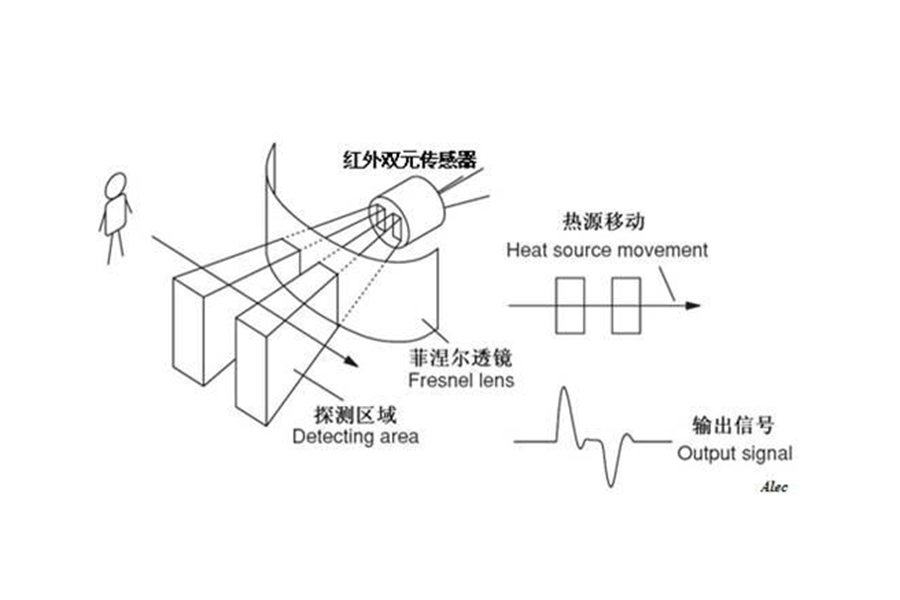
5. Temperature characteristics of PIR
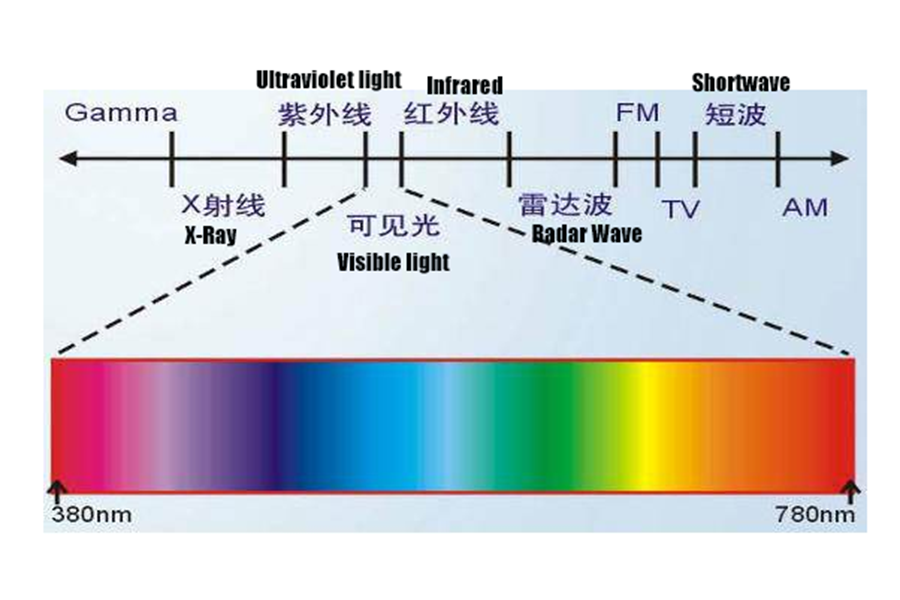
6. Human infrared radiation wavelength
Ordinary healthy body will emit about 10um specific wavelength infrared (temperature of about 37 ° C, 8-11um), with specially designed sensors can be targeted to detect the presence or absence of such infrared, when the human body infrared radiation to the sensor, due to the pyroelectric effect will be released outward charge, the subsequent circuit can be detected and processed to produce control signals.
7. The infrared wavelength range of the sensor
The spectral range of PIR is about 9 μm, (corresponding to about 37°C), all in the mid-infrared band, which is determined by the optical properties of the optical filter window mounted in the TO-5 type metal housing. The optical filter window can only pass 9um ±5umd infrared radiation, which means that only the temperature of objects with similar characteristics to the human body temperature can affect the sensor, this specially designed probe is only sensitive to infrared radiation with a wavelength of about 9μm, other object temperatures will not affect the sensor.
8. PIR temperature characteristics
Any object in nature, except for the theoretical absolute black body (-273°C) which does not radiate temperature energy, will radiate energy at a certain temperature. Therefore, the human infrared sensor is susceptible to interference from various heat sources, light sources and RF radiation, and the infrared radiation of the human body is easily blocked by various objects, and its penetration is poor. And, when the ambient temperature and human body temperature close, detection sensitivity will be significantly reduced, and in serious cases will also cause detection failure, so in the design and installation of the use of the above-mentioned issues should be noted.
9. Fresnel lens the basic concept
The role of the Fresnel lens in order to enhance sensitivity (enhance detection distance) and reduce white light interference, usually in the PIR probe radiation illumination surface covered with a special Fresnel filter lens. Fresnel filters have different focal lengths depending on performance requirements, resulting in different monitoring fields of view; the more fields of view, the tighter the control.
This surface mounted downlight with PIR sensor manufactured by ADAYO lighting can adjust bracket cut Φ65-185mm. The function of this infrared sensor adjustable opening downlight is described as follows:
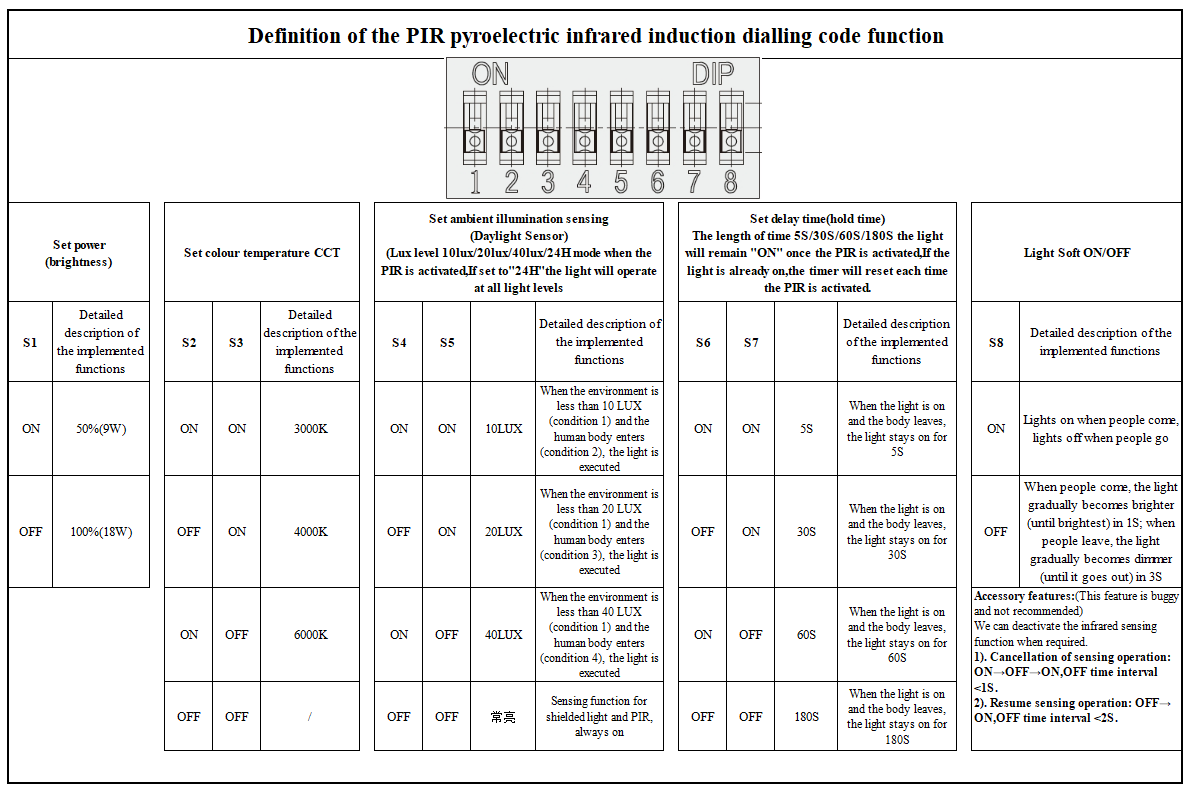
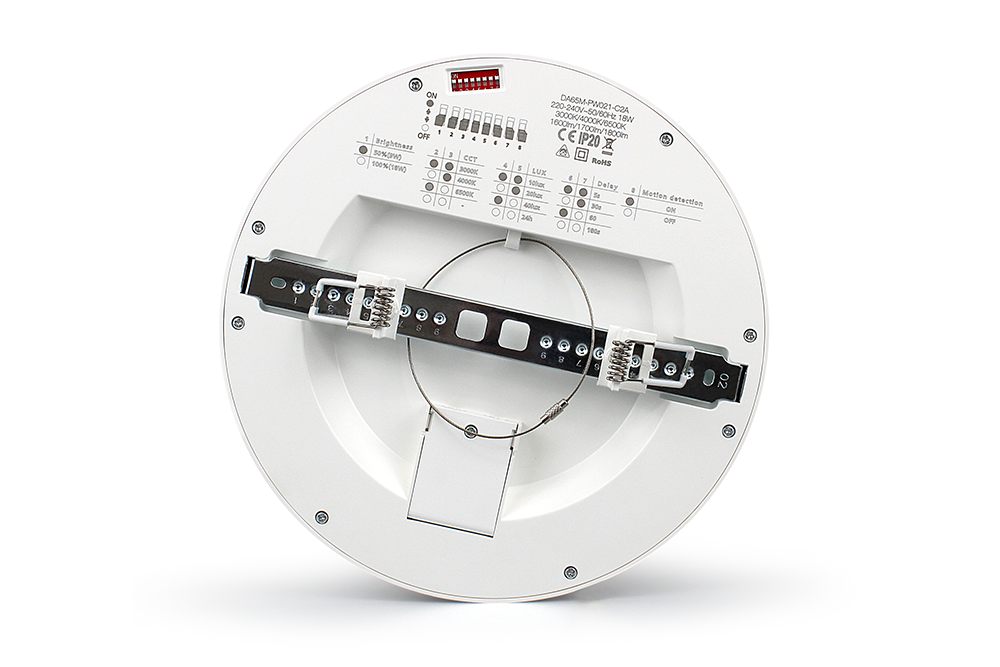

Website: https://www.adayoled.com
HUIZHOU FORYOU OPTOELECTRONICS TECHNOLOGY CO., LTD
Add: Foryou Industrial Park Area B -- Plant NO.6 No.1North Shangxia Road,Dongjiang High-tech Industry Park, Huizhou City,Guangdong Province
Tel: 0086-752-5300601
Fax: 0086-752-5300099
Email: [email protected]






























